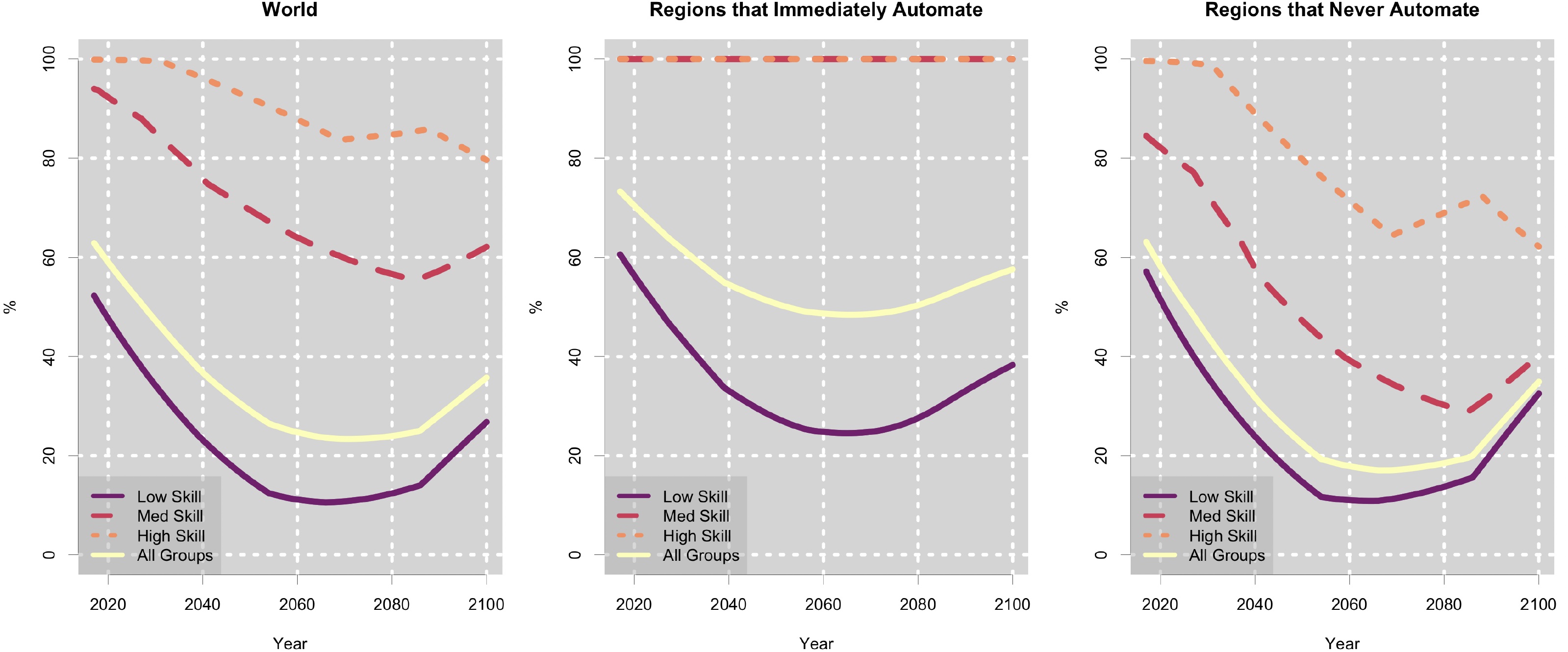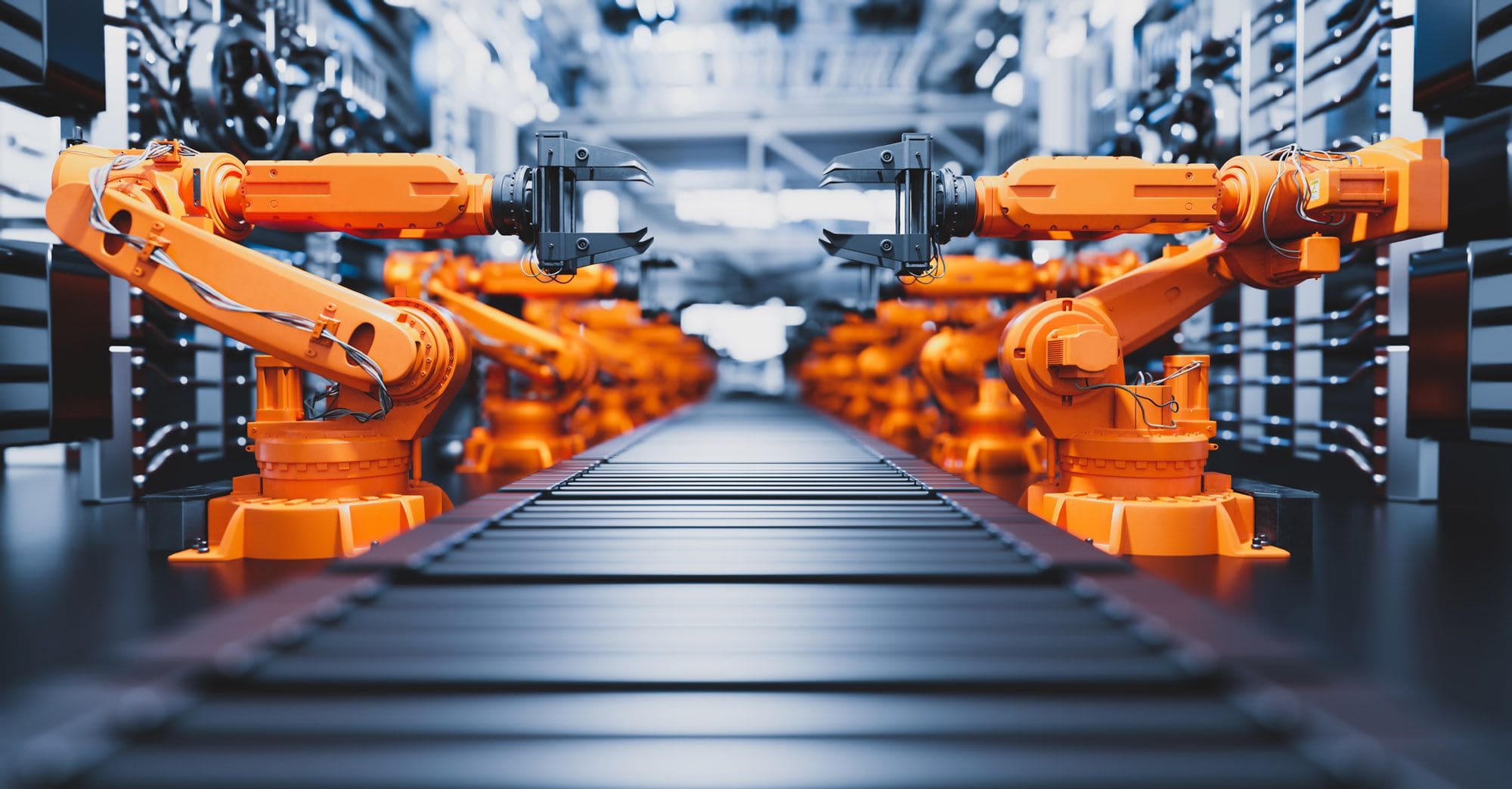by Seth G. Benzell and Victor Yifan Ye
Despite clear economic benefits of new digital technologies, slow median wage growth has led many to worry that these new technologies are failing to deliver for the average worker. This column develops a new model of global automation and technological change to study the long-term consequences of these trends. It finds that automation can boost output and growth, but these benefits are not equally distributed across or within regions. Nevertheless, in developed countries smart fiscal policy, such as universal basic income, can make new technologies a win-win for all age and skill groups.
While new digital technologies are increasingly hyped, slow median wage growth has led many to worry that these new technologies are failing to deliver for the average worker. While new digital and robotic technologies have obvious benefits, new concerns about automation and skill-biased technological change (SBTC) are being driven by an emerging set of macroeconomic phenomena. In the developed world, a shrinking share of income is being paid to labour, favouring capital owners over workers (Karabarbounis and Neiman 2014). Concurrently, labour income has also become more unequal (Milanovic and Roemer 2016). Both phenomena seem to be driven by technological change: automation has allowed firms to replace routine workers with capital (Autor et al. 2020, Gentile et al. 2020, Dao et al. 2019, Acemoglu and Restrepo 2020) and digital technologies have created ‘winner takes all’ markets, disproportionately favouring ‘superstar’ workers and firms (Autor et al. 2020, Kaplan and Rauh 2013, Benzell and Brynjolfsson 2019).
While the evidence shows that technological concerns are real, less well understood are the long-term consequences of these trends. Therefore, in our new research paper (Benzell et al. 2021), we developed a state-of-the-art, large-scale, computable general equilibrium model of global automation and skill-biased technological change. The model features 17 regions (the US, China, Russia, Western Europe, sub-Saharan Africa etc.) containing over 150 countries, each with three skill groups and 101 overlapping generations in each year. Each region has firms that hire workers, rent capital, and decide whether to use new (capital and high-skill biased) technologies or legacy technologies. Our model is closely calibrated to real world data, with the marginal effect of new technologies based on Acemoglu et al. (2020). We consider multiple technological scenarios, including a ‘baseline’ scenario where new factor share-shifting technologies are invented at a rate consistent with US input share shifts post-1980. Using this model, we predict the consequences of future automation and skill-biased technological change for workers in different regions, skill groups, and age groups. We also evaluate potential policy responses to automation.
It is important to begin by acknowledging the benefits of automation. New technologies can boost output and growth. Our model finds that automation will boost GDP in countries that adopt the automating technology, and for the world overall. If automation continues at its historical pace, it will increase US GDP by about 5% in 2050 (versus a scenario with no new factor-share-shifting automation technologies). Western Europe and Japan, which have high wages, high capital use intensity, and aging populations, also benefit disproportionately. While stylised models have shown that automation has the potential to lower global growth by redistributing from young savers to old spenders, and thereby reducing investment (Benzell et al. 2015), our model shows that this possibility isn’t particularly likely.


Countries do not benefit equally. Automation technologies are detrimental to regions that do not choose to adopt. Consistent with the stylised predictions of Zeira (1998), the most developed countries adopt and benefit the most from new technologies. This is because these regions have the highest low-skill wages, the most high-skill workers, and tend to have lower corporate taxes. In countries where low-skill labour is cheap and capital relatively expensive it makes little sense to automate. These developing countries are left worse off, as scarce capital is diverted to rich, automating nations. Mexico is the country that is made the worst off. In our baseline automation scenario and relative to no automation, Mexico’s GDP is 3.6% lower in 2050. This is because its capital stock is 9.2% lower in 2050, due to investment being siphoned to the US and other developed regions.


We predict, therefore, that new factor-share-shifting technologies will exacerbate inequality across regions. But perhaps an even more important impact is their exacerbation of inequality within regions. We find that these technologies leave the low-skilled (bottom income third, 60-80% of the population depending on the region) of most countries worse off while greatly benefiting the high-skilled (top income third, 2-15% of the population). Despite projected automation increasing global GDP, the average living global adult in 2050 is left roughly 1% worse off. Only in Japan – with its high share of high skill workers, very old population, and highly redistributive fiscal system – are all skill groups born after 2027 made better off in the baseline scenario relative to no automation. However, as Figure 3 shows, in the very long run, economic growth from automation partially offsets the inequality it induces.


How can nations deal with these challenges? We evaluate two policies – one for developed nations who adopt the technologies, and one for less developed regions that do not. Using the US as an example, we show how a universal basic income (UBI), funded with a combination of debt-financing and a progressive income tax, can make automation into a win-win for all skill and age groups. Paying for the universal basic income comes at a peak fiscal cost of 5.1% of GDP. The program would pay out, in 2017 dollars, $250 per month in 2025 and $650 per month in 2050. This policy lowers US GDP by 2.5% versus baseline automation without a UBI but leaves it higher than globally banning new automation technologies outright. In terms of welfare, young low-skilled workers are made roughly 10% better off, leaving them indifferent between automation plus UBI and no automation. The mid- and high-skilled are hurt by the program’s higher taxes but are still significantly better off with automation and the UBI.


For nations that don’t endogenously adopt automation, we consider a policy of forced industrialisation, i.e. a government mandate that firms use the frontier technology. In India – where the automating technology is on the margin of being profitable – but in no other non-automating region, this policy increases GDP by up to 1.5%. This GDP increase is due to capital onshoring and increased labour supply from immiserated low- and middle-skilled workers. However, automation remains inefficient in India, and firms immediately revert to the legacy technology if the policy is rescinded. Mandating automation significantly lowers welfare for the average Indian worker, who works more hours at lower wages. Nonetheless, such a policy might be attractive to high-skilled workers, who wield disproportionate political influence, and a national security sector interested in increased economic power.
Our model is, to our knowledge, the first large-scale, multi-region, global overlapping generations (OLG) model of automation. We capture and quantify, using this model, key macro implications of foundational models of technological change. We find that automation has a moderate effect on regional outputs and a small effect on interest rates, but a major impact on inter- and intra-regional inequality. We evaluate potential policy responses to automating technologies and show that a well-designed universal basic income (UBI) can make automation welfare-improving for all US workers regardless of skill or age.
Original article: https://voxeu.org/article/simulating-future-global-automation-its-consequences-and-evaluating-policy-options


















